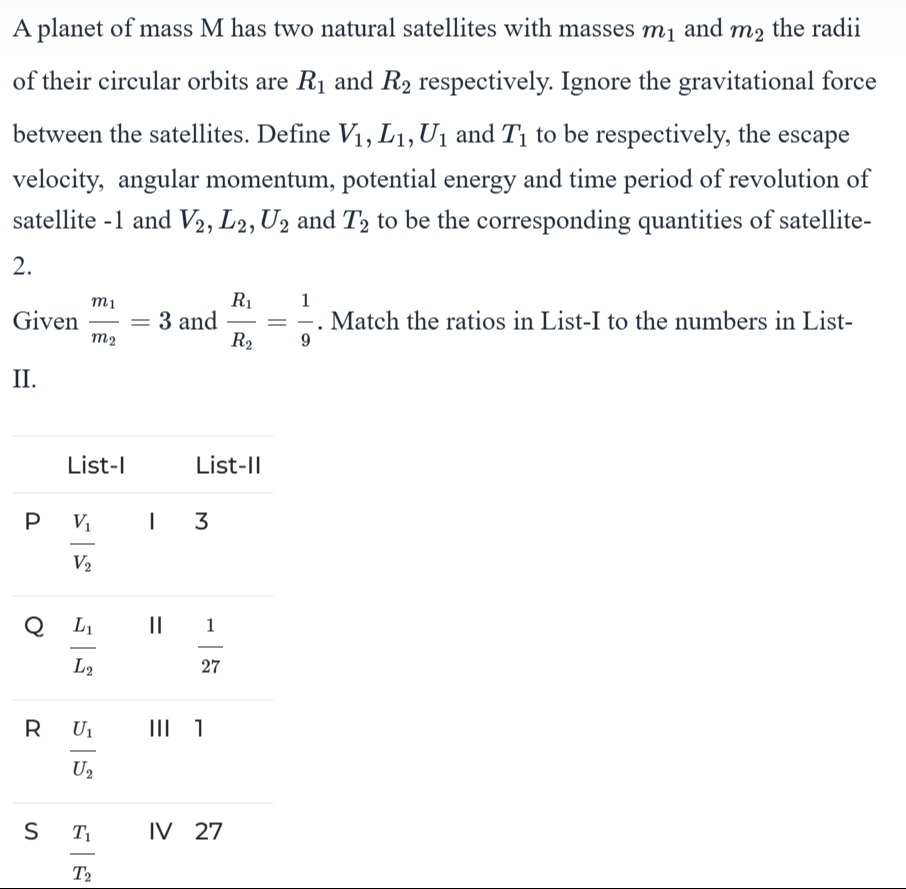Question
Question: A planet of mass M has two natural satellites with masses $m_1$ and $m_2$ the radii of their circula...
A planet of mass M has two natural satellites with masses m1 and m2 the radii of their circular orbits are R1 and R2 respectively. Ignore the gravitational force between the satellites. Define V1,L1,U1 and T1 to be respectively, the escape velocity, angular momentum, potential energy and time period of revolution of satellite -1 and V2,L2,U2 and T2 to be the corresponding quantities of satellite-2.
Given m2m1=3 and R2R1=91. Match the ratios in List-I to the numbers in List-II.
| List-I | List-II | ||
|---|---|---|---|
| P | V2V1 | I | 3 |
| Q | L2L1 | II | 271 |
| R | U2U1 | III | 1 |
| S | T2T1 | IV | 27 |

P → I, Q → III, R → IV, S → II
P → III, Q → I, R → II, S → IV
P → I, Q → II, R → III, S → IV
P → IV, Q → III, R → I, S → II
P → I, Q → III, R → IV, S → II
Solution
For a satellite in a circular orbit around a planet of mass M: Orbital velocity v=RGM, so v∝R−1/2. Escape velocity Ve=R2GM, so Ve∝R−1/2. Angular momentum L=mvr=mRGMR=mGMR1/2, so L∝mR1/2. Potential energy U=−RGMm, so U∝mR−1. Time period T=v2πR=GM/R2πR=GM2πR3/2, so T∝R3/2.
Given m2m1=3 and R2R1=91.
P. V2V1: V2V1∝R11/2R21/2=R1R2=9=3. Match: P → I (3)
Q. L2L1: L2L1=m2R21/2m1R11/2=m2m1R2R1=391=3×31=1. Match: Q → III (1)
R. U2U1: U2U1=m2R2−1m1R1−1=m2m1R1R2=3×9=27. Match: R → IV (27)
S. T2T1: T2T1∝R23/2R13/2=(R2R1)3/2=(91)3/2=((31)2)3/2=(31)3=271. Match: S → II (271)
